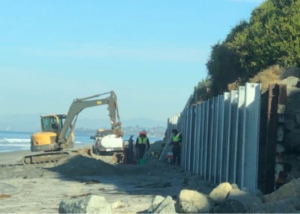Report prioritizes research projects regarding shipping choices, truck limits
Written by Kyra Senese, Managing Editor
The National Academies of Sciences, Engineering, and Medicine has released a new report that outlines a research path toward addressing uncertainties in estimating the potential impacts of proposed changes to truck size and weight limits.
The report, sponsored by USDOT, also defined a program of 27 research projects focused on shippers’ decisions to transport freight by truck, rail or other modes, as well as research regarding pavements, bridges, safety and enforcement.
The research pertains to possible changes to the regulations that set the maximum weights, lengths and numbers of trailers allowed for trucks on U.S. highways.
The U.S. Department of Transportation’s (USDOT) Federal Highway Administration tasked the National Academies with creating a plan for a research program to curtail uncertainties in estimates of the effects of changes to the limits.
The committee that conducted the study and authored the report also identified seven core research tracks, each of which includes one or more projects, that offer a likely probability of producing useful results within a practical time period and budget. The research tracks also analyze those that would contribute significantly to cutting out uncertainty in truck size and weight limit assessments.
The committee said it estimates that the core program could be completed within four to six years for $4 million to $6 million.
The core research tracks include:
- Development of a freight market model for estimating the effect of changes in truck size and weight regulations on shippers’ choices of freight mode and truck size.
- Development of a truck traffic, weight and configuration database from nationwide weigh-in-motion installations and other sources.
- Development of pavement analysis methods for heavier axle limits, multi-axle groupings and alternative tire and suspension types.
- Development of a model of the relationship of bridge deterioration and service life to vehicle loads.
- Comparative evaluations of crash risks of alternative configurations based on traffic and crash data.
- Development of protocols for evaluating the performance of configurations with simulation, track testing, and field trials.
- Measurement of relationships between frequency of overloads and enforcement methods and level of effort.
The committee also came to the conclusion that implementing a targeted research program, in addition to making improvements to data systems, would bolster the federal and state governments’ abilities to project impacts of changes in truck regulations.
Officials also said the research could reveal opportunities to improve safety and productivity, as well as manage highway costs, regardless of whether truck size and weight limits are modified.
The National Academies are private nonprofit organizations that provide independent analyses to the nation to solve complex problems and inform public policy decisions related to science, technology and medicine, officials stated.





